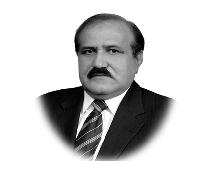MUHAMMAD USMAN
WITH Corona Virus enveloping the globe as of wildfire in a dry forest, situation is in a flux. Its trajectory remains yet unknowable. Nothing is certain except uncertainty. Half of the humanity is locked indoor. The economy is at virtual halt. With no timeline in sight for human captivity and economic inactivity to end, statistics of its ensuing fallouts are plummeting grossly. Initially, economic downturn was estimated in neighbourhood of 2008-09 recession. After a few days, it scaled up to 13%, a bigger fall than recession in comparison. Now slump is being called deepest peace time jolt since 1930. In mathematical terms, it staggers around 33%. The global output may not return to previous level until 2022 however, again these figures remain highly susceptible to change crudely. Probably, this is the reason that prompted chief of WTO, Roberto Azevedo to warn the world that pandemic’s long term effects are difficult to discern “these numbers are ugly – there is no getting around that”. Other world economic organizations also sound no less alarmingly. Of late, Bloomberg has summarized it a $5 trillion hit which world economy would receive and that is like losing Japan.
UN has called for a raft of measures by world community to the tune of $2.5 Trillion to enable developing economies to brave financial tsunami unleashed by the upheaval. In brief, situation is fraught with extreme dangers. For developed economies, it is how to put them back on rails. For developing economies, challenge involves fight against hunger and rehabilitation of economy to provide livelihood to millions of people under threat of joblessness with no compensation for sustenance. US has pumped in $2.2 Trillion to prop up its struggling economy as a result of pandemic. Japan is even ahead. It has seen pandemic barely yet it has obligated $1Trillion to shore up its economy against impending depression. The stimulus package of over 750 euros is also on the table by Germany. These are hefty packages by rich countries. The financial packages of poor countries are lightweight, being cash strapped. Being monetarily meagre, these needs to be rightly prioritized and money is spent with maximum effectiveness. Besides, hope for a strong, coordinated and well-crafted global response is not greater when one sees stimulus packages, being announced unilaterally by rich countries to save their economies and nothing substantial for collective cause. This further reinforces the said need. Pakistan has also gone for a rescue package with an outlay of Rs 1200 Billion. Albeit it is biggest historically however, far less in content than what is otherwise needed hence, prudence in spending holds the key. The package encompasses relief for impoverished people/daily wagers and liberal incentives for industry for job creation, export earnings and ultimately, the economic recovery nevertheless, agriculture could only fetch a token attention in the package despite being the biggest component of population and potentially capable of making the greatest contribution single-handedly in GDP at relatively far lesser cost than industry particularly, in such volatile times.
At present, share of agriculture in GDP is 18.5% and of industry is 20.3%. About 64% of population lives in rural areas but agriculture only absorbs its 38.5% workforce. Rest is either employed elsewhere or is unemployed. Earlier agriculture was the biggest contributor in GDP but its share continued to dwindle for a host of reasons including political, social and environmental reasons. Ironically, Jehangir Tareen was heading an Agriculture Task Force. Basically he is an industrial shark. The report of sugar scam is its latest testimony. Without meaning to belittle share of industry in GDP, unfortunately, it has come at very heavy price over a long haul particularly, at expense of agriculture. The country continued to invest heavily in industry in the hope of a bigger cake wherein, other sections of society may also have a reasonable bite but it was seldom there. The self-seeking industrialists/businessmen tend to customize it according to own specifications with scant regard to interests of the state and other people involved in the enterprise. They are guilty of amassing wealth through state protection, subsidies, SROs, concessional/written off loans and tax evasion. They do hoarding to sell their products exorbitantly. By and large, they are predators.
This is the tale of conducive times. Amid numerous constraints internationally for their output/export, one could barely hope from them to stand up for test of collectivism. At best, they could be palliative rather than being part of enduring solution to our economic woes. Besides, their hearts pulsate with ruling elite which is hell bent inwardly to undo national unity and appreciable efforts being made by government to contain epidemic, provide relief and revive economy in order to discredit the government. It is a worrisome dimension. Apart from above, agriculture merits a far greater focus on mere these few aspects. Agriculture produces essential commodities thus, creates real wealth whereas, industry/service sectors thrives on wealth of people – to spend mostly non-essentially and consume their products. In upcoming uncertain times, understandably flow of money would be short and slow. It is said that agriculture not only gives riches to a nation but only riches it can call its own. An enhanced agriculture is best hedge against starvation and impoverishment. This would also reduce unemployment. Pakistani industrial products may be difficult to export but agricultural outputs like rice and wheat could be sold abroad as of hot cake due to their likely scarcity caused by pandemic thus, way forward lies therein.
— The writer, a retired Lt Col, is freelance columnist based in Islamabad.










